Archive
Commodore 64 IEEE-488 Cartridge
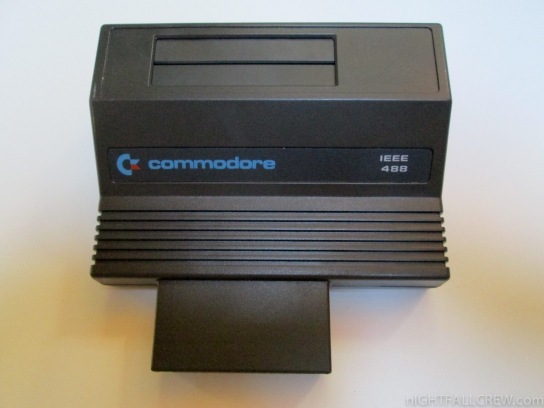
Autopsy:
from Richard Lagendijk Homepage:
This cartridge makes it possible to use hardware with a IEEE 488 interface with a Commodore C64. This could be a disk drive, printer or hard disk from the CBM / PET computer models.
source: richardlagendijk.nl
Thomson TO8D
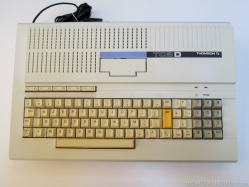
Autopsy:
from Wikipedia:
The Thomson TO8D is a Home Computer created by the French company Thomson-SIMIV and released in 1986. It replaces the predecessor, the TO7/70, while remaining largely compatible. New features are: (more memory, better graphics modes) are common to the whole range of third generation (MO6, and TO8 TO9 +).
It has a tape drive and the BASIC 512 / BASIC 1.0 by Microsoft integrated in ROM and provides a connection for external floppy drive. An improved version, the TO8D has a additionally Floppy Drive 3 1/2″ integrated.
Overview of game loading:
source: wikipedia dcmoto.free.fr
TRS-80 Color Deluxe Joystick Boxed / Koala Touchpad / Mouse
Super Com 60 (Nes on a Chip)
Autopsy:
You can see the review of the Super Com 72 here
It’s a famous famiclone and it will play famicom (nes) games. It’s compatible with JAP/USA cartridges without regional lockout chip (CIC). The console comes with 60 games included on the cartridge.
Compaq Portable III (Model 2660) with External Expansion Chassis
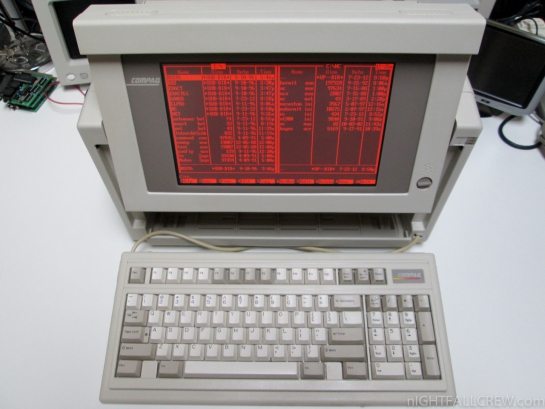
Autopsy:
from Wikipedia:
The Compaq Portable III is a computer released by Compaq Computer Corporation in 1987. It was advertised as being much smaller and lighter than the previous portable x86-PCs, however it was still quite large by today’s standards.
Its street price upon its release was 4999 USD for a model equipped with an 12 MHz Intel 80286 CPU, 640 kB RAM, 1.2 MB 5.25″ floppy, 20 MB hard disk (type 2), and a 10″ amber colored gas-plasma display or 5799 USD with the upgraded 40 MB hard disk. There was also an optional ISA Expansion chassis allowed for 2 full length 16-bit ISA add-in cards for 199 USD. Power is supplied using a mains electricity outlet, no battery exist.
source: wikipedia
Osborne 1 (System One – 1981)

Autopsy:
from Wikipedia:
The Osborne 1 was the first commercially successful portable microcomputer, released on April 3, 1981 by Osborne Computer Corporation. It weighed 10.7 kg (23.5lb), cost USD$ 1795, and ran the then-popular CP/M 2.2 operating system. The computer shipped with a large bundle of software that was almost equivalent in value to the machine itself, a practice adopted by other CP/M computer vendors.
Its principal deficiencies were a tiny 5 inches (13 cm) display screen and use of single sided, single density floppy disk drives which could not contain sufficient data for practical business applications.
The Osborne’s design was based largely on the Xerox NoteTaker, a prototype developed at Xerox PARC in 1976 by Alan Kay. The Osborne 1 was developed by Adam Osborne and designed by Lee Felsenstein. It was first announced in April, 1981. Adam Osborne, an author of computer books, decided he wanted to break the price of computers.
The computer was designed to be portable, with a rugged ABS plastic case that closed up and a handle. The Osborne 1 was about the size and weight of a sewing machine and was advertised as the only computer that would fit underneath an airline seat. It is now classified as a “luggable” computer when compared to later laptop designs such as the Epson HX-20.
source: wikipedia
Amstrad Monitor PC-CD / Mouse / Keyboard and System Discs
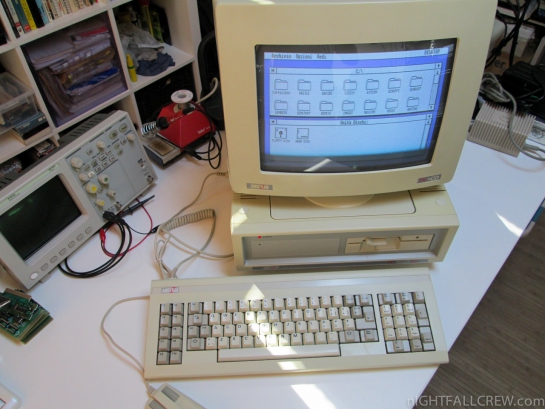
Autopsy:
The Autopsy of the Amstrad PC 1640 SD (IBM PC-compatible) can be read here
from Wikipedia:
The Amstrad PC1512 was Amstrad’s mostly IBM PC-compatible home computer system, first manufactured in 1986. It was later succeeded by the PC1640.
It launched for £499 and sold very well, as it was one of the first cheap PCs in Europe. It significantly helped open up the European PC market to consumers as well as businesses, and Amstrad’s advertising of the PC1512 was aimed at homes rather than offices. The 1512′s influence was such that the UK PC magazine PC Plus originally targeted itself at the “Amstrad PC 1512 and compatibles”, since home ownership of other PCs at the time was rare.
The PC1512 shipped with 512K of RAM; it could be upgraded to 640K of RAM with an expansion pack. Video output was compatible with the CGA standard, with an extension allowing all 16 colours to be used in the 640×200 graphics mode. The CPU of both the PC1512 and the later PC1640 was an 8 MHz Intel 8086, which was sufficient for playing The Secret of Monkey Island, Maniac Mansion and Prince of Persia. The power supply was located in the monitor, which made upgrading difficult.
Unboxing SIO2SD Micro by Panos Santos
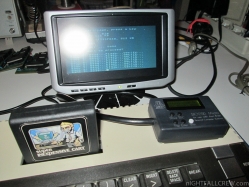
Autopsy:
The SIO2SD is a device that allows you to load games/applications into any 8-bit Atari XL/XE computers via SIO interface from SD cards.
This version is like the original SIO2SD (based to latest schematic “version 2″) but in a smaller form with some improvements by Panos.
Panos improvements:
- As for the cpu the latest “low consumption” ATMega32A microcontroller in smd form.
- The 74LVC245 who guarantees good data transfer between the microcontroller and SDcard, in proper voltage levels also.
- New 47nf capacitors for better button response.
- Extra resistor and capacitor added in output of low dropout voltage regulator, for better voltage stability particularly at “no load” condition. As result of that is much higher reliability and compatibility with more SD cards.
- New tactile switches with smooth feeling for more comfortable use.
- Push on-Push off type SD connector.
source: atariage.com/forums
ACT Apricot F1e Boxed
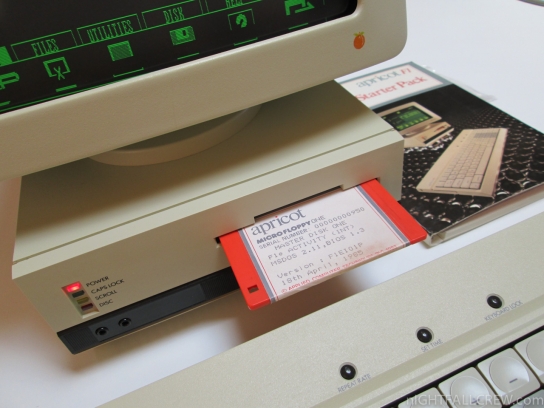
Autopsy:
from Wikipedia:
Apricot Computers is a British manufacturer of business personal computers, originally founded in 1965 as “Applied Computer Techniques” (ACT), changing its name to Apricot Computers, Ltd. in the 1980s. It was a wholly owned UK company until it was acquired in the early 1990s by the Mitsubishi Electric Corporation, which hoped that Apricot would help them compete against Japanese PC manufacturers, in particular NEC which commanded over 50% of the Japanese market at the time. Mitsubishi eventually shut down the Apricot brand; a management buyout resulted in new company Network Si UK Ltd being formed. In 2008 a new, independent Apricot company was launched in the UK.
Apricot was a remarkably innovative computer hardware company. The Birmingham R&D center could build every aspect of a personal computer except for the integrated circuits (chips) themselves, from custom BIOS and system-level programming to the silk-screen of motherboards and metal-bending for internal chassis all the way to radio-frequency testing of a finished system. This coupled with a smart and aggressive engineering team allowed Apricot to be the first company in the world with several technical innovations including the first commercial shipment of an all-in-one system with a 3.5-inch floppy drive (ahead of Apple), while in the early 90s they manufactured one of the world’s most secure x86-based PCs, sold exclusively to the UK government.
In 1985 ACT was renamed “Apricot Computers”. By this time, the F1 had become one model in the F Series; other machines in the series were the F1e (a cheaper F1 with less RAM standing at 256KB); the F2 (with two floppy drives) and the F10 (with a 10MB Rodime hard drive, 512KB RAM and a more conventional-looking infra-red keyboard). The Activity GUI was replaced by GEM. The F1e contained a 360KB single sided floppy drive, and the F10 contained a 720KB double sided drive. Some F1e computers shipped with an expansion card that could also be used in the F10, that would modulate the RGB video signal to RF enabling the computer to be used with a domestic television set. This card also contained a composite video output. The machine was unusual in that it contained the same 36-way Centronics parallel port that appeared on many contemporary printers (and continued to do so until virtually replaced with USB and ethernet). This means that a standard 36-way centronics male to centronics male cable needs to be used to connect a printer – and these were hard to find since IBM had introduced the DB25F connector.
source: wikipedia
Overview of some Flash Cartridges for Snes,Megadrive,N64,Atari 2600
Quick overview of some Flash Cartridges (backup device) for Super Nintendo (Famicom/Snes), Megadrive (Genesis), Nintendo 64, Atari 2600.
Flash cartridges (backup device) used in this video:
- Everdrive-MD flash cartridge for Sega Megadrive (Genesis) with SD/MMC interface.
- EverDrive 64 backup device for Nintendo 64 with SD interface.
- SD2Snes backup device for Super Nintendo (Snes/Famicom) with SD interface.
- Harmony flash cartridge for Atari 2600 with SD interface.
Unboxing SD2Snes MK II REV E2 by Ikari for Famicom/Super Nintendo

Autopsy:
The SD2Snes cartridge is a SD Card Cartridge for the Super Nintendo / Famicom / Snes.
This cartridge, unlike previous products such as the NeoFlash SNES Myth Cart, has more space inside the Xilinx Spartan FPGA to store code so in the future it is possible to support any special chip as long as it has been firmware updated with the latest code provided that support has been developed and implemented.
Xilinx Spartan FPGA Firmware updates can be done without any special hardware, again, unlike the NeoFlash product. You can put the firmware on an SD card and it will automatically find the file and allow you to flash it right in place.
This cartridge already supports the Capcom CX4 microchip which is used in both the Megaman/Rockman X2 and Megaman/Rockman X3 cartridges. NTSC/U/J and PAL/E ROMs will run without a hitch as well as the Megaman X3 Zero Mission ROM (with the latest firmware update which readdresses some of the memory mapping in code).
It also works with ALL DSP chips including third party vendors (DSP1A/B, DSP2, DSP3, and DSP4). SD Gundam GX and TopGear 3000 run as well as Dungeon Master and Pilotwings. All of these titles load in a fraction of a second and are fully playable. There is no difference between the gameplay of these ROMs using sd2snes than playing them on original cartridge hardware.
Features:
- SD/SDHC/SDXC support (tested up to 64GB; no exFAT support so SDXC cards must be reformatted using FAT32)
- High quality push-push memory card slot.
- Fast ROM loading (~9MB/s)
- Fast menu navigation.
- Directories are sorted automatically, no need for FAT sorting tools.
- High resolution menu (512×224) for adequate display of long file names.
- Real Time Clock.
- Supports ROM size up to 128MBit (96Mbit actually implemented)
- Automatic near-time SRAM saving to SD Card (while the game runs). Some limitations apply:
- near-time saving is switched to periodic saving when a game is found to use the SRAM as work RAM.
- Automatic saving is disabled when MSU1 is used. SRAM is saved on reset.
- Enhancement chip support (see below for implementation status)
- BS-X memory map / Satellaview base unit registers (clock)
- DSP1 / 1b
- DSP2
- DSP3
- DSP4
- ST-010
- Cx4
- MSU1 (Each supported enhancement chip can be used in conjunction with MSU1.)
- S-RTC
- SuperCIC key (SNES CIC clone):
- enables operation on unmodified consoles of all regions.
- supports software 50/60Hz switching on SuperCIC enhanced consoles only (to be performed by sd2snes firmware, not yet implemented there)
- Auto region patching: eliminates “This Game Pak is not designed…” messages regardless of 50/60Hz setting.
A few things that may be added via Firmware updates in the future:
- GSU-1/2 (SuperFX)
- Action Replay/Game Genie code support
- SPC7110
- and more…
SD2Snes Video Review:
Download: SD2Snes Cartridge Label (1860)
source: sd2snes.de tototek.com
Joystick Albatros MicroSwitch by Alberici (Bologna / Italy)
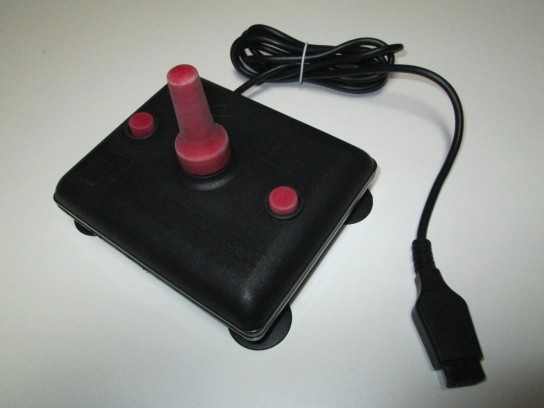
Autopsy:
My personal feedback: This is one of the best Joystick ever made for a intensive use.
from Wikipedia:
Albatros is a joystick produced by Alberici S.p.a (Bologna / Italy). It was sold in the 1980s on the Italian market. The joystick had six microswitches, four for the lever and two for the buttons, together with an audible feedback.
A first series was produced with a slim frustum cone lever. The second production featured a sphere on the top of a larger lever.
source: wikipedia
Commodore Amiga TV-Modulator 520 Boxed
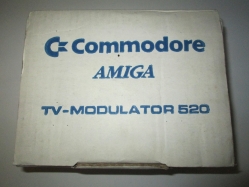
Autopsy:
The Commodore Amiga 520 Video Adapter is a device that allows you to connect your Amiga 500 to a TV set or a composite video monitor.
It does this by converting the RGB video signal the Amiga produces for RGB monitors to a composite video signal that a TV or composite monitor can interpret.
Commodore Amiga 500 (A500) REV 6A Expanded 1MB & Boxed
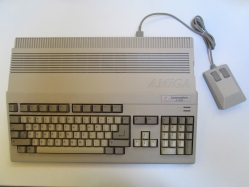
Autopsy:
from Wikipedia:
The Amiga 500 – also known as the A500 (or its code name ‘Rock Lobster’) – was the first “low-end” Commodore Amiga 16/32-bit multimedia home/personal computer. It was announced at the winter Consumer Electronics Show in January 1987 – at the same time as the high-end Amiga 2000 – and competed directly against the Atari 520ST. Before Amiga 500 was shipped, Commodore suggested that the list price of the Amiga 500 was 595.95 USD without a monitor. At delivery in 1987, Commodore announced that the Amiga 500 would carry a 699 USD list price.
The Amiga 500 represented a return to Commodore’s roots by being sold in the same mass retail outlets as the Commodore 64 – to which it was a spiritual successor – as opposed to the computer-store-only Amiga 1000.
The original Amiga 500 proved to be Commodore’s best-selling Amiga model, enjoying particular success in Europe. Although popular with hobbyists, arguably its most widespread use was as a gaming machine, where its advanced graphics and sound for the time were of significant benefit.
The Amiga 500 series was discontinued in mid-1992 replaced by the similarly specified and priced Amiga 600, although this new machine had originally been intended as a much cheaper budget model, which would have been the A300. In late 1992, Commodore released the “next-generation” Amiga 1200, a machine closer in concept to the original Amiga 500, but featuring significant technical improvements. Despite this, neither the A1200 nor the A600 replicated the commercial success of its predecessor as, by this time, the market was definitively shifting from the home computer platforms of the past to commodity Wintel PCs and the new “low-cost” Macintosh Classic, LC and IIsi models.
source: wikipedia

























































































































































































Recent Comments